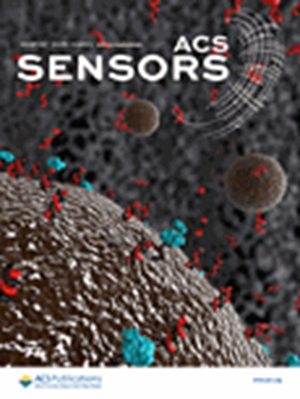Enhanced Room-Temperature NO2 Sensing via a Reduced Graphene Oxide/CuO Composite on Flexible Nylon Fibers.
IF 9.1
1区 化学
Q1 CHEMISTRY, ANALYTICAL
引用次数: 0
Abstract
To address the need for compact, flexible nitrogen dioxide (NO2) gas sensors capable of operating under complex wearable conditions, this study presents a composite gas-sensitive structure comprising reduced graphene oxide/copper oxide (RGO/CuO) integrated with a flexible nylon fiber. The proposed sensor demonstrates reliable detection of low-concentration NO2 gas at room temperature, offering benefits such as compact size, lightweight design, excellent flexibility, and superior gas-sensitive response. RGO was incorporated onto the nylon fiber surface through a straightforward infiltration technique, followed by the growth of a zinc oxide nanowire array on the RGO nylon fiber via a water bath method. This process enhances the specific surface area of the gas-sensitive film. The RGO material was doped and modified with CuO nanoparticles, with additional regulation of the oxygen vacancy concentration. Testing revealed a detection limit of 0.5 ppm. Within a NO2 gas concentration range of 2-10 ppm, the sensor exhibited a linear increase in responsiveness, demonstrating excellent room-temperature response. The gas-sensing enhancement mechanism was investigated, identifying the synergistic effects of the heterogeneous structure, the high specific surface area of the film, and the high carrier mobility as key contributors to its performance. Additionally, a low-power monitoring and early warning node powered by a lithium battery was developed, and the reliability of the wearable sensor system was verified. These results underscore its substantial application potential in wearable electronics.柔性尼龙纤维上还原氧化石墨烯/CuO复合材料增强室温NO2传感。
为了满足对能够在复杂可穿戴条件下工作的紧凑、柔性二氧化氮(NO2)气体传感器的需求,本研究提出了一种复合气敏结构,该结构由还原氧化石墨烯/氧化铜(RGO/CuO)与柔性尼龙纤维集成在一起。该传感器能够在室温下可靠地检测低浓度NO2气体,具有体积小、设计轻、灵活性好、气敏响应好等优点。通过直接渗透技术将氧化石墨烯掺入尼龙纤维表面,然后通过水浴法在氧化石墨烯尼龙纤维上生长氧化锌纳米线阵列。该工艺提高了气敏膜的比表面积。对氧化石墨烯材料进行了CuO纳米粒子的掺杂和修饰,并对氧空位浓度进行了额外的调节。检测结果显示,检测限为0.5 ppm。在NO2气体浓度2 ~ 10ppm范围内,传感器的响应性呈线性增长,表现出良好的室温响应。研究了气敏增强机理,确定了非均相结构、薄膜的高比表面积和高载流子迁移率的协同效应是其性能的关键因素。开发了锂电池供电的低功耗监测预警节点,验证了可穿戴传感器系统的可靠性。这些结果强调了其在可穿戴电子产品中的巨大应用潜力。
本文章由计算机程序翻译,如有差异,请以英文原文为准。
求助全文
约1分钟内获得全文
求助全文
来源期刊

ACS Sensors
Chemical Engineering-Bioengineering
CiteScore
14.50
自引率
3.40%
发文量
372
期刊介绍:
ACS Sensors is a peer-reviewed research journal that focuses on the dissemination of new and original knowledge in the field of sensor science, particularly those that selectively sense chemical or biological species or processes. The journal covers a broad range of topics, including but not limited to biosensors, chemical sensors, gas sensors, intracellular sensors, single molecule sensors, cell chips, and microfluidic devices. It aims to publish articles that address conceptual advances in sensing technology applicable to various types of analytes or application papers that report on the use of existing sensing concepts in new ways or for new analytes.
 求助内容:
求助内容: 应助结果提醒方式:
应助结果提醒方式:


